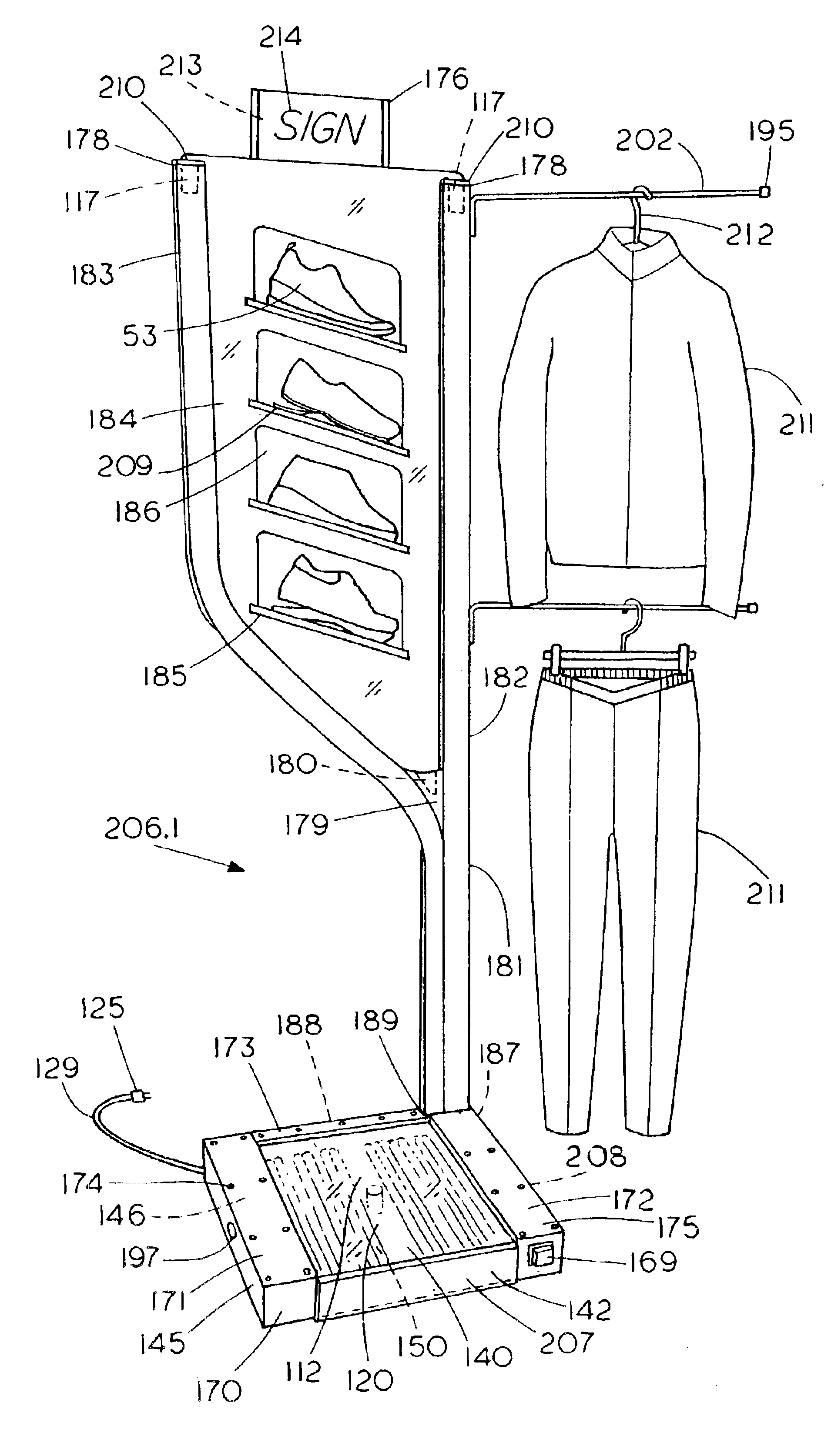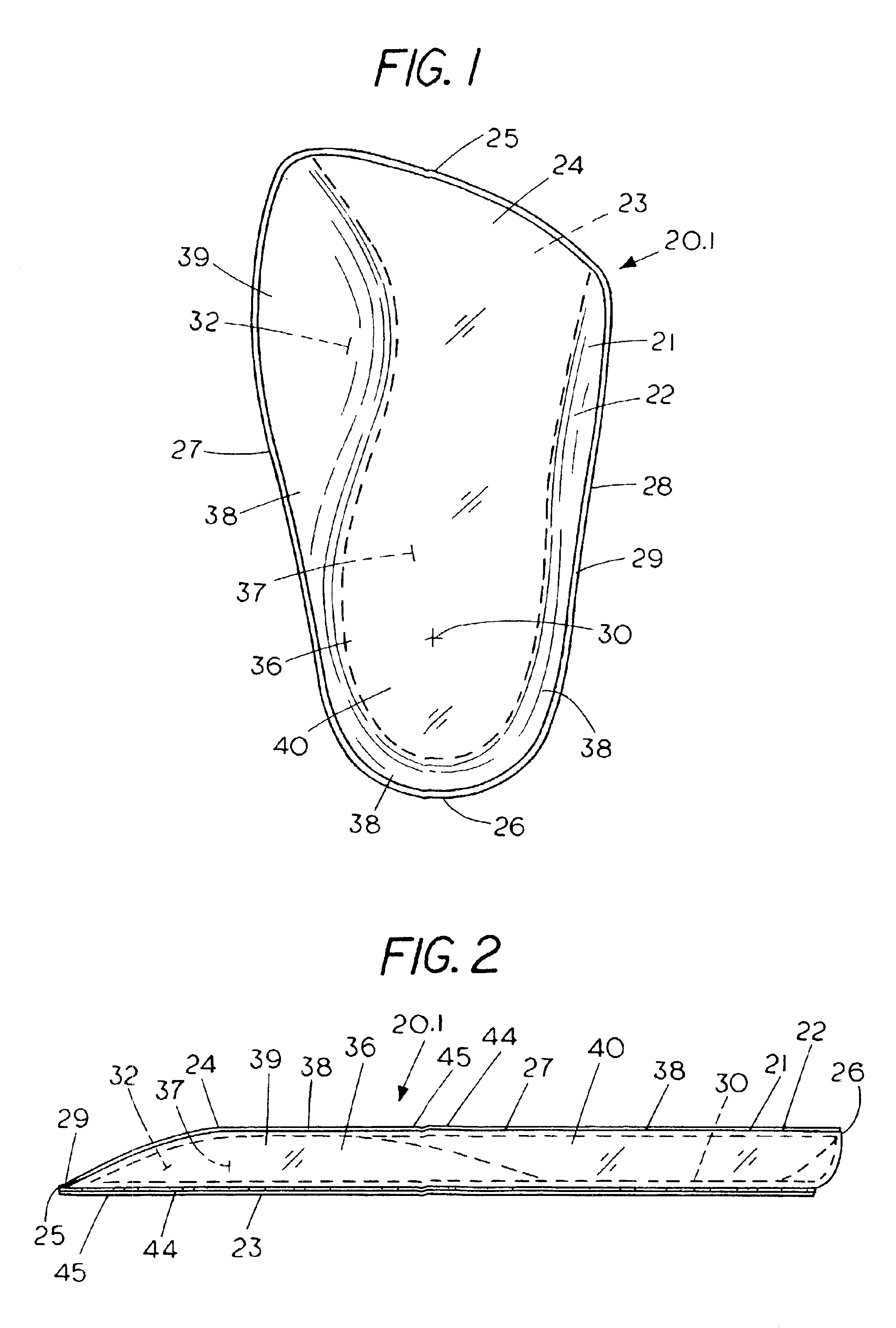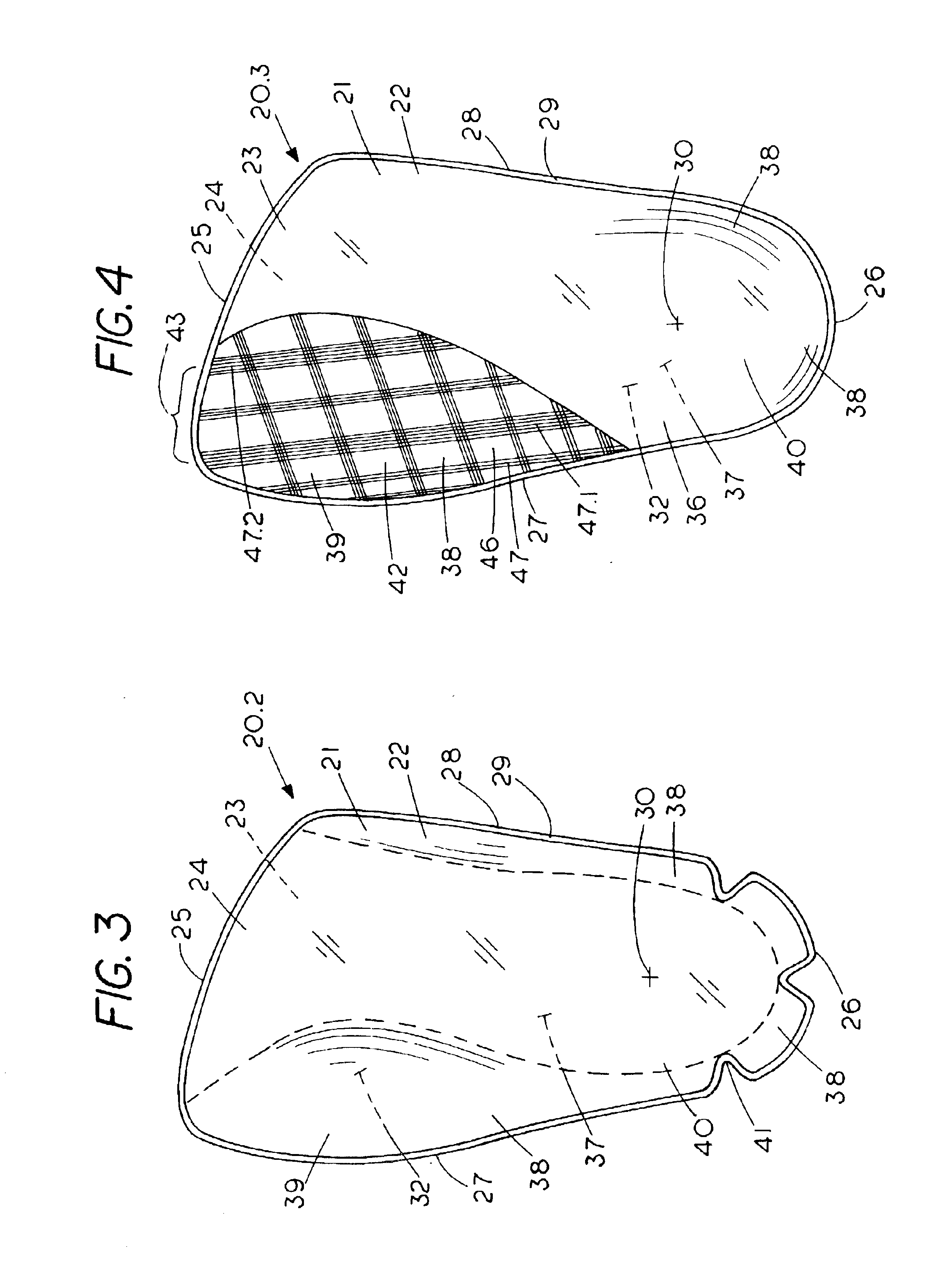Method of making custom insoles and point of purchase display
a technology of custom insoles and display cases, applied in the field of custom insoles and point of purchase display cases, can solve the problems of not being able to meet the needs of every individual to the same degree, requiring considerable time for a specialist to fabricate, and no other practical or prudent alternative that will provide remedial relief, etc., to achieve the effect of enhancing conformity
- Summary
- Abstract
- Description
- Claims
- Application Information
AI Technical Summary
Benefits of technology
Problems solved by technology
Method used
Image
Examples
Embodiment Construction
[0088]The present invention teaches a conformable device including a light cure material that can be caused to set and cure when exposed to visible light having a wavelength substantially between 400-780 nanometers for customizing a portion of an article of footwear in order to enhance conformance or fit, support, comfort, and cushioning, in partial or complete combination. In particular, a custom conformable device consisting of an insole, or portion thereof, can serve to accommodate the unique anatomical features and characteristics of an individual wearer. When a wearer's foot is positioned in functional relation to a conformable device, a force application can be made thereupon causing a light cure material contained therein to be displaced and mold in conformance with the shape of the wearer's foot. The light cure material can then be caused to set and cure using a suitable visible light source thereby causing the shape imparted to the conformable device to be substantially ret...
PUM
| Property | Measurement | Unit |
|---|---|---|
| speed | aaaaa | aaaaa |
| wavelength | aaaaa | aaaaa |
| wavelength | aaaaa | aaaaa |
Abstract
Description
Claims
Application Information
 Login to View More
Login to View More - R&D
- Intellectual Property
- Life Sciences
- Materials
- Tech Scout
- Unparalleled Data Quality
- Higher Quality Content
- 60% Fewer Hallucinations
Browse by: Latest US Patents, China's latest patents, Technical Efficacy Thesaurus, Application Domain, Technology Topic, Popular Technical Reports.
© 2025 PatSnap. All rights reserved.Legal|Privacy policy|Modern Slavery Act Transparency Statement|Sitemap|About US| Contact US: help@patsnap.com



